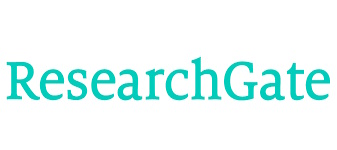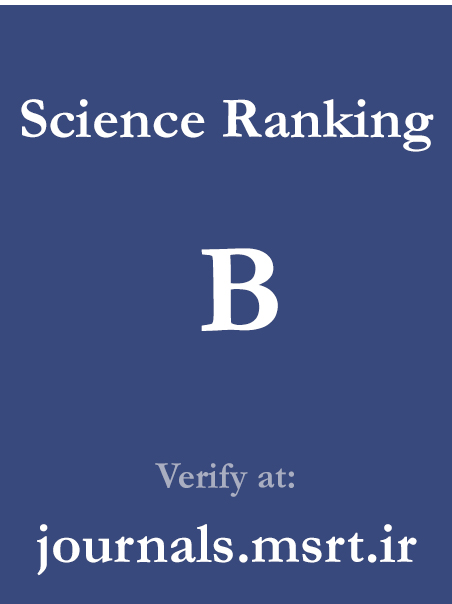Examining the Media Consumption Patterns of Iranian Users in Cyberspace: A Media Communication Management Approach
Keywords:
Media trust, digital infrastructure, media consumption, demographic differences, media motives, IranAbstract
This study aims to investigate the relationship between users’ trust in media, digital infrastructure, demographic characteristics, and media consumption patterns among Iranian users over the age of 15. A quantitative and correlational research design was used to examine the relationships between multiple variables simultaneously. The statistical population included Iranian users aged 15 and above with access to cyberspace. Using Cochran’s formula, a sample of 384 participants was selected through multi-stage cluster sampling. Data were collected via a researcher-made questionnaire based on a five-point Likert scale. The validity of the instrument was confirmed by experts, and its reliability was verified using Cronbach's alpha (α = 0.87). Variables measured included demographic characteristics (age, gender, education, residence), media consumption motives (information-seeking, entertainment, social interaction), trust in media (domestic and foreign), frequency of media use (official, domestic social, foreign social), and digital infrastructure (internet access, smart devices). The findings revealed a significant positive correlation between trust in domestic media and its consumption (Gamma = 0.42, p < 0.001). A one-way ANOVA showed that higher levels of digital infrastructure were associated with greater virtual media consumption (F = 6.52, p = 0.002). Chi-square tests indicated significant differences in media consumption based on age (X² = 18.73, p = 0.001), gender (X² = 5.54, p = 0.003), and education (X² = 21.65, p < 0.001). Multiple regression analysis demonstrated that all three motives—information (β = 0.34), social interaction (β = 0.26), and entertainment (β = 0.18)—significantly predicted the type of media used by respondents (p < 0.005 for all). The study confirms that trust in media, digital access, demographic factors, and motivational drivers all play critical roles in shaping users' media consumption behaviors in the digital landscape of Iran.
Downloads
References
Abu, R., Setiawati, L., Agustina, S., Ramadhan, S. Y., & Khoerunnisa, L. (2025). Exploring the Impact of Social Media Usage Towards Mental Health Among University Student in Malaysia. International Journal of Research and Innovation in Social Science, VIII(IIIS), 6354-6362. https://doi.org/10.47772/ijriss.2024.803479s
Ahmed, S. I., & Zia, A. (2022). Uses and Gratification Theory and Social Media Interactivity: A Demographic Study in Lahore, Pakistan. Global Regional Review, VII(I), 50-60. https://doi.org/10.31703/grr.2022(vii-i).06
Ali, S. R. A., Wan Nor Haliza Wan, M., & Izhar, T. A. T. (2021). Recent Development on Social Media Usage for the Evaluation of Library Users’ Satisfaction. International Journal of Social Science Research, 9(2), 107. https://doi.org/10.5296/ijssr.v9i2.18826
Balouchi, M., & Khanmohammadi, E. (2015). Using Logarithmic Fuzzy Preference Programming to Prioritization Social Media Utilization Based on Tourists’ Perspective. Foundations of Management, 7(1), 7-18. https://doi.org/10.1515/fman-2015-0021
Beenu. (2023). Usage of Social Media Trends Among Adolescents: A Demographic Perspective. International Journal for Multidisciplinary Research, 5(5). https://doi.org/10.36948/ijfmr.2023.v05i05.7325
Hamza, A., Yonghong, D., & Ullah, I. (2025). Dynamic Shifts in Social Media Usage in Pakistan: A Comparative Analysis Across Pre-, During-, and Post-Covid-19 Periods. Journalism and Media, 6(2), 59. https://doi.org/10.3390/journalmedia6020059
Hosseini, M., & Moeini, F. (2022). The Credibility of Information on Social Media: The Study of Iranian Users. https://doi.org/10.21203/rs.3.rs-2026943/v1
Irum, S., Khan, S., Abbas, S., Tabasum, T., & Jabeen, M. (2025). Exploring the Relationship Between Social Media Usage and Civic Engagement in the Digital Era: A Mediation Moderation Analysis. CRSSS, 3(1), 1272-1286. https://doi.org/10.59075/tk68kt45
Koohikamali, M., Kermani, H., & Rabiei‐Dastjerdi, H. (2024). Social Media Engagement and Disclosure in the Iranian Setting. https://doi.org/10.22541/au.170664382.29190247/v1
Mirghaderi, L. (2021). Social Media Users Free Labor in Iran. Socially Responsible Modeling Computation and Design, 1(1). https://doi.org/10.18409/soremojournal.v1i1.19
Mirghaderi, L. (2022). Social Media Users' Free Labor in Iran: Influencers, Ethical Conduct and Labor Exploitation. Frontiers in Sociology, 7. https://doi.org/10.3389/fsoc.2022.1006146
Moradi, S. (2024). Territorial Imagination: Social Media, Visual Images, and Affect in Iranian Kurdistan. cultural geographies, 32(2), 183-204. https://doi.org/10.1177/14744740241264306
Naeem, R., Bajwa, A., Sattar, H., & Naeem, B. (2023a). Effect of Social Media Usage on Digital Carbon Footprint: Analyzing Awareness Level of Social Media Users of Punjab. https://doi.org/10.21203/rs.3.rs-3225346/v1
Naeem, R., Bajwa, A., Sattar, H., & Naeem, B. (2023b). Social Media Platforms and Their Digital Carbon Footprints: Analyzing Awareness Level of Social Media Users of Punjab, Pakistan. https://doi.org/10.21203/rs.3.rs-3299158/v1
Navarro, C., & Peres-Neto, L. (2023). “Hair for Freedom” Movement in Iran: Interreligious Dialogue in Social Media Activism? Religions, 14(5), 602. https://doi.org/10.3390/rel14050602
Noorymotlagh, M. (2023). Forecasting the Trend of Specialized Digital Marketing of Social Media in Iran in 2023. Journal of Economics Management and Trade, 29(10), 89-97. https://doi.org/10.9734/jemt/2023/v29i101145
Sundarsih, D., & Sudiarti, S. (2023). The Effect of Social Media on Youth in the Digital Era. Majalah Bisnis & Iptek, 16(1), 163-171. https://doi.org/10.55208/mhe0xd76
Tabatabaei, S., Ахмедовна, Б. Б., Trofimova, G., & Barabash, V. (2025). Social Media, Cultural Values, and Digital Citizenship: A Study of Iranian Digital Natives. Changing Societies & Personalities, 9(1), 29. https://doi.org/10.15826/csp.2025.9.1.316
Downloads
Published
Submitted
Revised
Accepted
Issue
Section
License
Copyright (c) 2024 Razieh Mohammadi (Author); Javad Sadeghi Jafari (Corresponding author)

This work is licensed under a Creative Commons Attribution-NonCommercial 4.0 International License.







